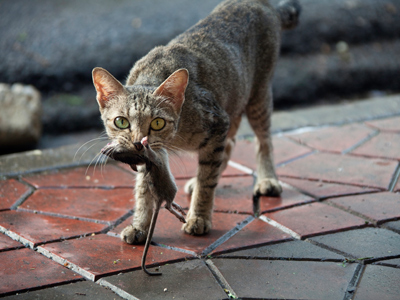

Invasive Species
This Geography quiz is called 'Invasive Species' and it has been written by teachers to help you if you are studying the subject at senior high school. Playing educational quizzes is one of the most efficienct ways to learn if you are in the 11th or 12th grade - aged 16 to 18.
It costs only $19.50 per month to play this quiz and over 3,500 others that help you with your school work. You can subscribe on the page at Join Us
In senior high school, Geography students will look at the negative effects that invasive, non-native species of both plant and animal have on an established ecosystem. Most of them have been introduced by humans, either deliberately or accidentally, so it is therefore our collective responsibility to try to control the problems caused. This quiz looks at those effects and also some possible methods of lessening their impact.
Ready for more?
not all...
quizzers. Try to win a coveted spot on our Hall of Fame Page.






